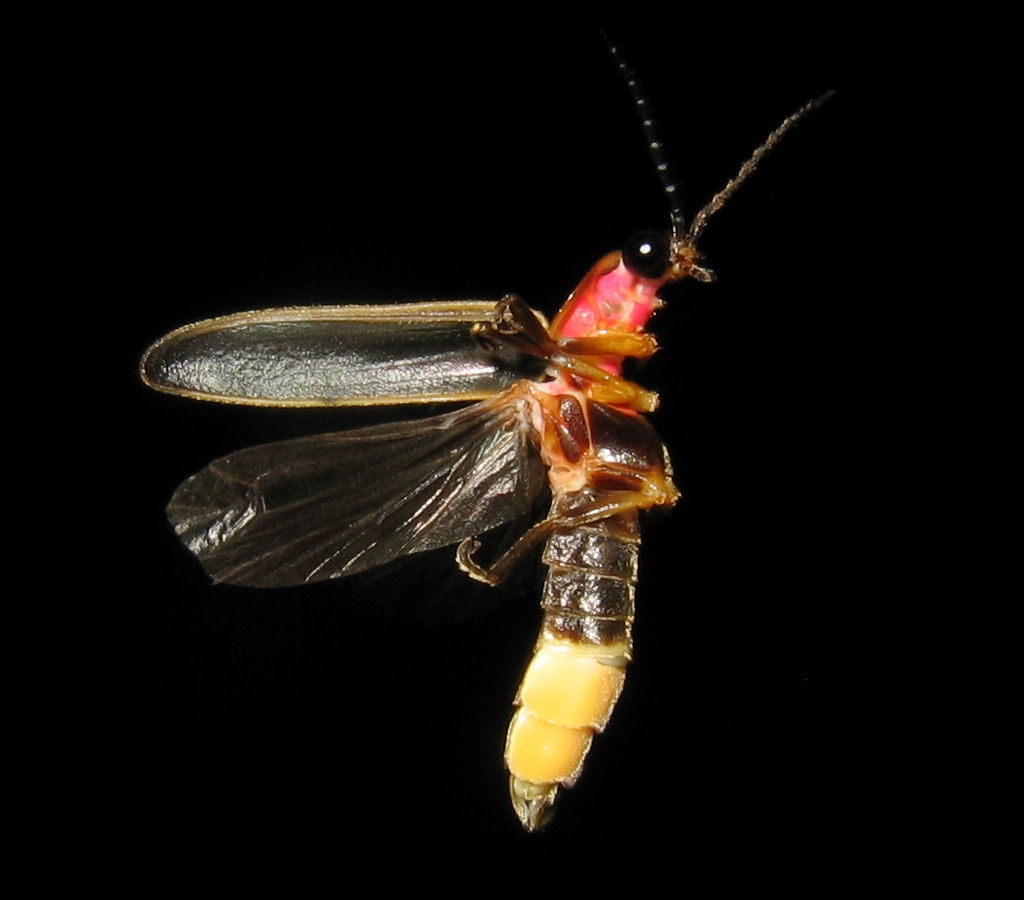
A firefly’s lower abdomen is comprised of three major layers: the cuticle and photogenic layers, and stratum basal. The cuticle layer and stratum basal, which blanket the photogenic layer, are believed to be the key components of more efficient luminescence. (image: terry priest/Flickr)
SEOUL, April 25 (Korea Bizwire) – Fireflies, amongst many living organisms yet known to man, have the most efficient luminescence mechanisms.
A domestic research team has taken advantage of this natural phenomenon to develop a technology that increases the efficiency of organic light-emitting diodes (OLED) by more than 60 percent.
A research team led by professor Ki-hoon Jung of KAIST (Korea Advanced Institute of Science and Technology) analyzed the structural anatomy of firefly’s light-emitting organs, which led to the discovery that scale-like nano-structures in askew layers formed hierarchically increased the efficiency of luminescence.
Upon the application of similar structural elements, the researchers saw an increase in the efficiency of OLEDs of 61 percent compared to existing models.
Scientists have long been researching ways to maximize luminous efficiency ever since discovering the light mechanisms of fireflies.

Scientists have long been researching ways to maximize luminous efficiency ever since discovering the light mechanisms of fireflies. (image: Uqbar is back/Flickr)
A firefly’s lower abdomen is comprised of three major layers: the cuticle and photogenic layers, and stratum basal. The cuticle layer and stratum basal, which blanket the photogenic layer, are believed to be the key components of more efficient luminescence.
Professor Jung’s team discovered that scale-like cuticles with nano-thin lines, and askew layers that are hierarchical in form all contribute to greater efficiency. These structural attributes were applied to improve the light efficiency of OLEDs.
Compared to existing OLEDs, the efficiency was 61 percent greater, and also brighter at broader angles.
“We have successfully created a highly efficient biomimetic OLED by discovering and applying the anatomical properties of fireflies. This particular engineering method has presented a new direction for future lighting and display technologies, and their biomimetic applications,” said professor Jung.
The full research findings were published in the March issue of Nano Letters.
Joshep Shin (jss539@koreabizwire.com)







Pingback: 60% Increase in Luminous Efficiency Modeled Aft...